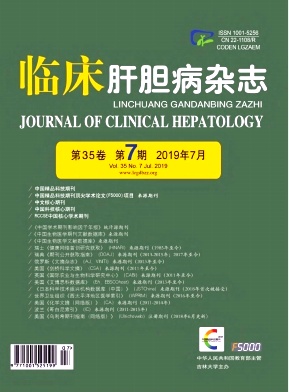|
[1]LUCIA AP, CHARALAMBOS GA, QUENTIN MA, et al.Role of monocytes and macrophages in experimental and human acute liver failure[J].World J Gastroenterol, 2010, 16 (15) :1811-1819.
|
|
[2]MARIA JT, MARCELINO A, JESU'S MC, et al.An overview of animal models for investigating the pathogenesis and therapeutic strategies in acute hepatic failure[J].World J Gastroenterol, 2009, 15 (25) :3086-3098.
|
|
[3]VIEYRA DS, JACKSON KA, GOODELL MA.Plasticity and tissue regenerative potential of bone marrow-derived cells[J].Stem Cell Rev, 2005, 1 (1) :65-69.
|
|
[4]JANG YY, COLLECTOR MI, BAYLIN SB, et al.Hematopoietic stem cells convert into liver cells within days without fusion[J].Nat Cell Biol, 2004, 6 (6) :532-539.
|
|
[5]VALFRE DBL, FERRERO I, CRAVANZOLA C, et al.Human mesenchymal stem cells as a two-edged sword in hepatic regenerative medicine:Engraftment and hepatocyte differentiation versus profibrogenic potential[J].Gut, 2007, 57 (2) :223-231.
|
|
[6]CASHEN AF, LINK D, DEVINE S, et al.Cytokines and stem cell mobilization for autologous and allogeneic transplantation[J].Curr Hematol Rep, 2004, 3 (6) :406-412.
|
|
[7]MARK AL, SUN Z, WARREN DS, et al.Stem cell mobilization is life saving in an animal model of acute liver failure[J].Ann Surg, 2010, 252 (4) :591-596.
|
|
[8]KIMURA M, YAMADA T, IWATA H, et al.Preoperative granulocyte-colony stimulating factor (G-CSF) treatment improves congested liver regeneration[J].J Surg Res, 2010, 158 (1) :132-137.
|
|
[9]ZHANG L, KANG W, LEI Y, et al.Granulocyte colony-stimulating factor treatment ameliorates liver injury and improves survival in rats with d-galactosamine-induced acute liver failure[J].Toxicol Lett, 2011, 204 (1) :92-99.
|
|
[10]TERBLANCHE J, HICKMAN R.Animal models of fulminant hepatic failure[J].Dig Dis Sci, 1991, 36 (6) :770-774.
|
|
[11] TUNON MJ, ALVAREZ M, CULEBRAS JM, et al.An overview of animal models for investigating the pathogenesis and therapeutic strategies in acute hepatic failure[J].World J Gastroenterol, 2009, 15 (25) :3086-3098.
|
|
[12]YA JC, SHIH LH, YI TL, et al.Gallic acid induces necroptosis via TNF-αsignaling pathway in activated hepatic stellate cells[J].PLo S One, 2015, 10 (3) :e0120713.
|
|
[13]TOGEL F, ISAAC J, WESTENFELDER C.Hematopoietic stem cell mobilization-associated granulocytosis severely worsens acute renal failure[J].J Am Soc Nephrol, 2004, 15 (5) :1261-1267.
|
|
[14]KANA S, TAKAAKI O, YU M, et al.Therapy with granulocyte colony-stimulating factor in the chronic stage, but not in the acute stage, improves experimental autoimmune myocarditis in rats via nitric oxide[J].J Mol Cell Cardiol, 2010, 49 (3) :469-481.
|
|
[15]WINSTON S, ASHISH M, SZE YL, et al.G-CSF for stem cell therapy in acute myocardial infarction:Friend or foe?[J].Cardiovasc Res, 2011, 89 (1) :20-30.
|
|
[16]MAGGIOLINI S, LENATTI L, MALAFRONTE C, et al.G-CSFadministration in acute myocardial infarction:What is the best timing?[J].Cardiovasc Res, 2011, 91 (1) :180-182.
|














 DownLoad:
DownLoad: